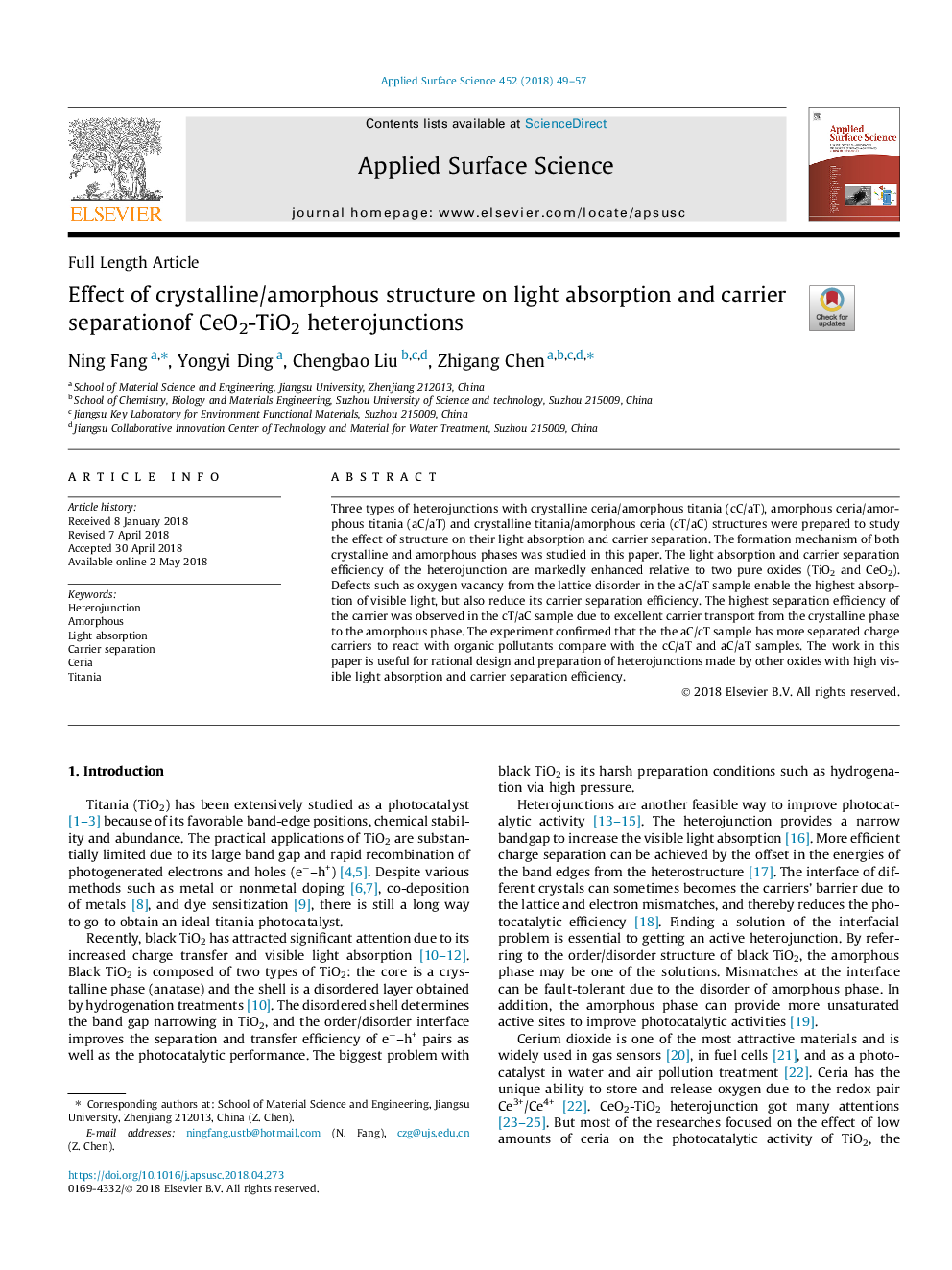| Article ID | Journal | Published Year | Pages | File Type |
|---|---|---|---|---|
| 7833354 | Applied Surface Science | 2018 | 9 Pages |
Abstract
Three types of heterojunctions with crystalline ceria/amorphous titania (cC/aT), amorphous ceria/amorphous titania (aC/aT) and crystalline titania/amorphous ceria (cT/aC) structures were prepared to study the effect of structure on their light absorption and carrier separation. The formation mechanism of both crystalline and amorphous phases was studied in this paper. The light absorption and carrier separation efficiency of the heterojunction are markedly enhanced relative to two pure oxides (TiO2 and CeO2). Defects such as oxygen vacancy from the lattice disorder in the aC/aT sample enable the highest absorption of visible light, but also reduce its carrier separation efficiency. The highest separation efficiency of the carrier was observed in the cT/aC sample due to excellent carrier transport from the crystalline phase to the amorphous phase. The experiment confirmed that the the aC/cT sample has more separated charge carriers to react with organic pollutants compare with the cC/aT and aC/aT samples. The work in this paper is useful for rational design and preparation of heterojunctions made by other oxides with high visible light absorption and carrier separation efficiency.
Related Topics
Physical Sciences and Engineering
Chemistry
Physical and Theoretical Chemistry
Authors
Ning Fang, Yongyi Ding, Chengbao Liu, Zhigang Chen,
